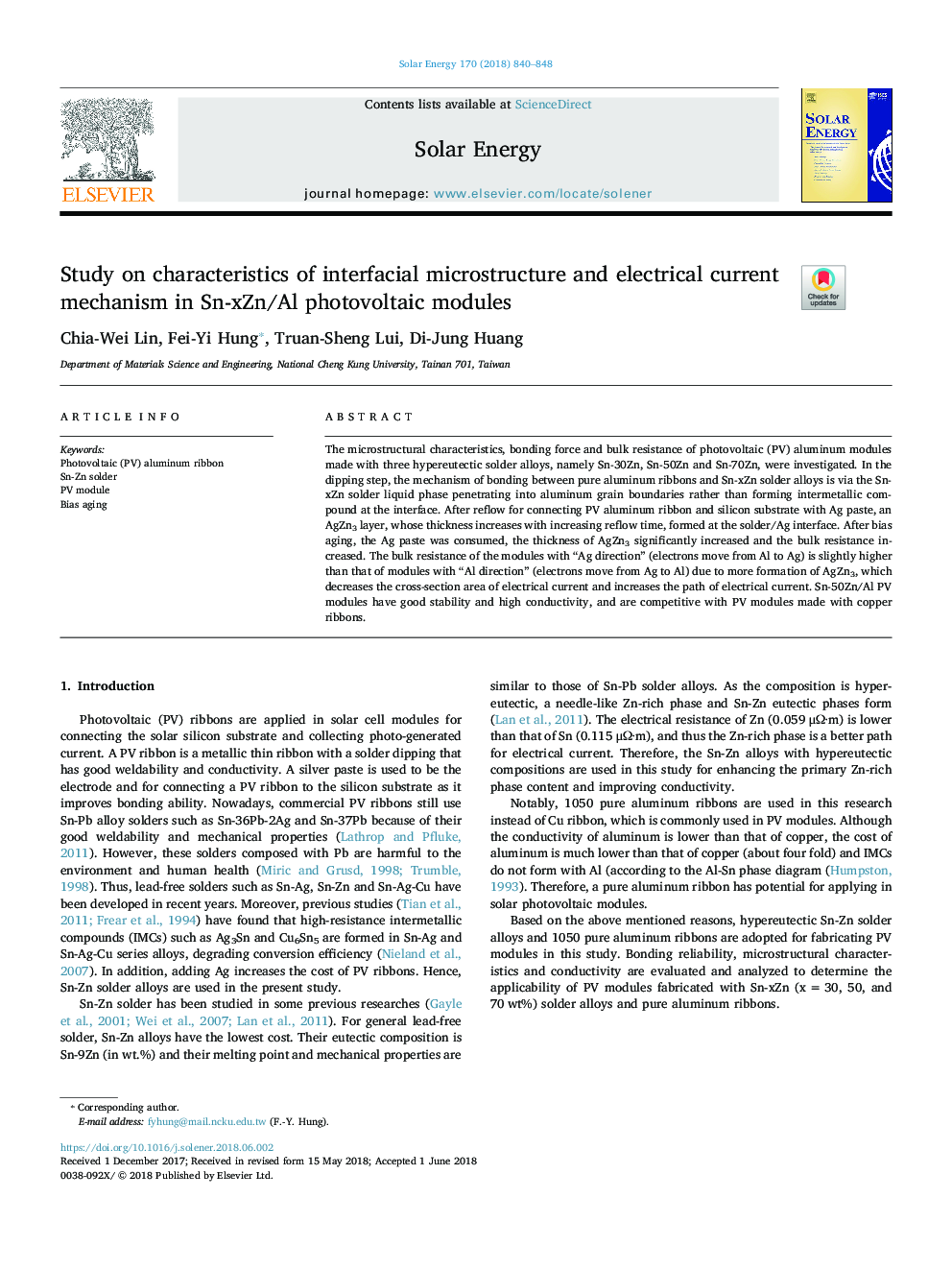| Article ID | Journal | Published Year | Pages | File Type |
|---|---|---|---|---|
| 7935130 | Solar Energy | 2018 | 9 Pages |
Abstract
The microstructural characteristics, bonding force and bulk resistance of photovoltaic (PV) aluminum modules made with three hypereutectic solder alloys, namely Sn-30Zn, Sn-50Zn and Sn-70Zn, were investigated. In the dipping step, the mechanism of bonding between pure aluminum ribbons and Sn-xZn solder alloys is via the Sn-xZn solder liquid phase penetrating into aluminum grain boundaries rather than forming intermetallic compound at the interface. After reflow for connecting PV aluminum ribbon and silicon substrate with Ag paste, an AgZn3 layer, whose thickness increases with increasing reflow time, formed at the solder/Ag interface. After bias aging, the Ag paste was consumed, the thickness of AgZn3 significantly increased and the bulk resistance increased. The bulk resistance of the modules with “Ag direction” (electrons move from Al to Ag) is slightly higher than that of modules with “Al direction” (electrons move from Ag to Al) due to more formation of AgZn3, which decreases the cross-section area of electrical current and increases the path of electrical current. Sn-50Zn/Al PV modules have good stability and high conductivity, and are competitive with PV modules made with copper ribbons.
Keywords
Related Topics
Physical Sciences and Engineering
Energy
Renewable Energy, Sustainability and the Environment
Authors
Chia-Wei Lin, Fei-Yi Hung, Truan-Sheng Lui, Di-Jung Huang,
